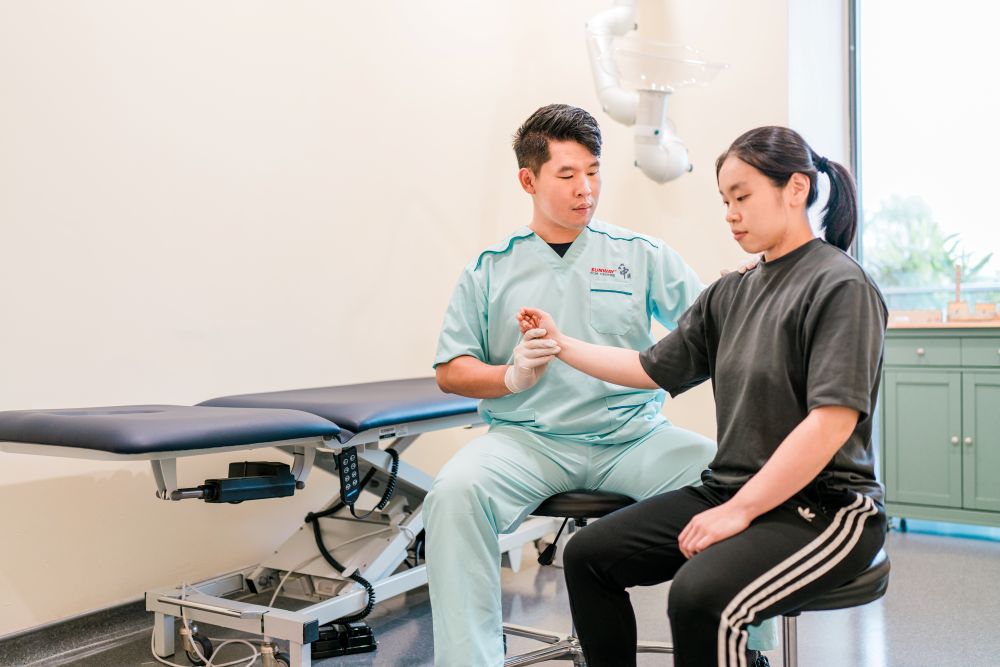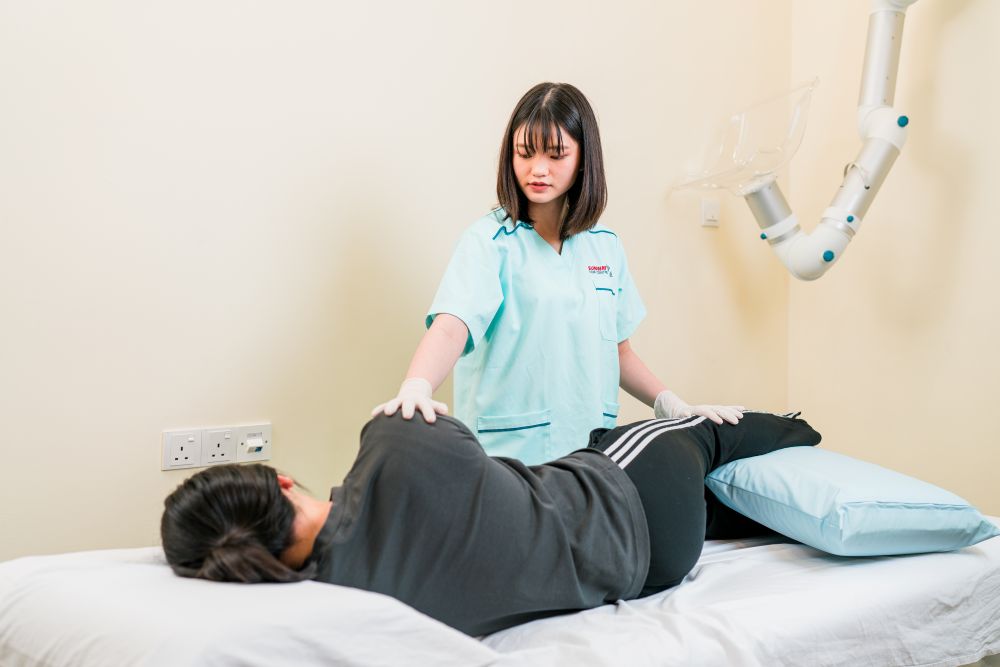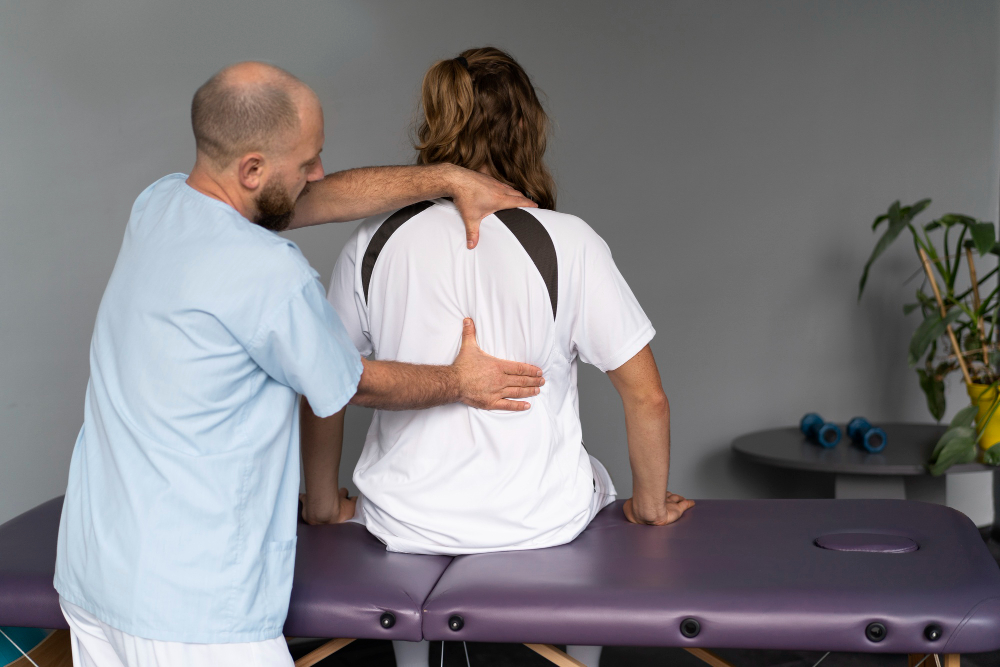What is Spinal Manipulation And How Does It Help You
27/05/2025
Spinal manipulation has long been used as a natural method to support physical well-being, particularly for those experiencing musculoskeletal discomfort. Rooted in traditional and modern practices, it involves controlled movements to address dysfunctions in the spine.
While often associated with chiropractic care, spinal manipulation is widely practised across various healthcare disciplines as part of a broader approach to maintaining body alignment and mobility.
This article provides an overview of what is spinal manipulation, how it differs across practices, and what to know before considering it as a treatment option.
Key Takeaways
- Spinal manipulation is a hands-on technique that aims to restore joint mobility and relieve pressure in the spine.
- It benefits individuals with back pain, poor posture, or muscle stiffness by improving mobility and reducing discomfort.
- Only trained chiropractors, osteopaths, physiotherapists, and licensed TCM practitioners should perform spinal manipulation.
- Common types include HVLA thrusts, mobilisation, flexion-distraction, drop table technique, and soft tissue manipulation.
- While both aim to improve spinal health, chiropractic adjustments are more specialised and typically performed by licensed chiropractors.
- Spinal manipulation is generally safe when conducted by certified practitioners, with minor side effects being the most common.
Understanding the Concept of Spinal Manipulation

Spinal manipulation is a hands-on technique to improve joint function and relieve pressure within the spine. It typically involves applying controlled force to specific spinal joints to restore mobility that may be restricted due to injury, strain, or prolonged tension.
This method is often incorporated into physical therapy, chiropractic care, and traditional healing systems as part of a holistic approach to managing spine-related discomfort.
While techniques may vary across practices, the goal remains consistent: to support natural movement and encourage the body’s self-healing capabilities.
Is Spinal Manipulation Right for You? Here’s Who Can Benefit

A 2020 systematic review and meta-analysis concluded that spinal manipulation therapy effectively reduces systolic and diastolic blood pressure, suggesting potential benefits beyond musculoskeletal issues.
Spinal manipulation can be a practical solution for individuals with joint stiffness, posture issues, or recurring pain, not just those with chronic conditions.
Here are some common cases where this treatment is often recommended, along with the key benefits it can offer.
| Who May Benefit | Why it Helps/ Key Benefits |
|---|---|
| Individuals with back or neck pain | Alleviates pressure on spinal joints and reduces inflammation for pain relief. |
| Office workers with poor posture | Realigns the spine and improves postural stability caused by prolonged sitting. |
| People experiencing tension headaches | Relieves neck and upper back tension that can trigger or worsen headaches. |
| Athletes and active individuals | Enhances mobility, supports muscle recovery, and prevents strain-related injuries. |
| Seniors with limited range of motion | Promotes joint flexibility and ease of movement through gentle manipulation. |
| Those under physical stress or fatigue | Reduces muscular stiffness and supports relaxation through improved alignment. |
Curious about how holistic healing can support your health? Discover the top 10 benefits of acupuncture and explore the full range of traditional Chinese medicine benefits.
Who Is Qualified to Perform Spinal Manipulation?

Spinal manipulation should only be carried out by trained and certified professionals. Their expertise ensures the technique is performed safely and effectively, tailored to each patient’s condition and needs.
| Practitioner Type | Qualifications & Role |
|---|---|
| Chiropractors | Licensed healthcare professionals specialising in diagnosing and treating musculoskeletal disorders through manual spinal techniques. |
| Osteopaths | Trained in osteopathic medicine, they use manual manipulation and holistic approaches to treat a range of physical conditions. |
| Physiotherapists | Some physiotherapists with specialised training may use mobilisation or manipulation as part of rehabilitation programs. |
| Traditional Chinese Medicine (TCM) Practitioners | In certain cases, qualified TCM professionals trained in musculoskeletal manipulation may perform these techniques using traditional methods. |
| Medical Doctors (with additional training) | In rare cases, doctors with advanced musculoskeletal training may perform or recommend spinal manipulation as part of integrative care. |
Explore how Sunway TCM’s integrated oncology centre and stroke rehabilitation centre in Malaysia combines traditional therapies with modern cancer care to support your healing journey.
5 Common Spinal Manipulation Techniques Explained

Spinal manipulation techniques vary in intensity, precision, and purpose—each designed to address specific conditions, mobility issues, or patient sensitivities.
-
High-Velocity, Low-Amplitude (HVLA) Thrusts
A fast and precise manual thrust is applied to a specific spine joint. This technique is known for its signature “popping” sound, which occurs when gas is released from the joint. It's typically used to restore mobility and reduce joint stiffness quickly.
-
Mobilisation Techniques
Gentler than HVLA, this approach involves slow, controlled movements to stretch and loosen the joints gradually. It’s ideal for older adults, patients with high sensitivity, or those recovering from injuries.
-
Flexion-Distraction Technique
Performed on a specialised table, this method involves rhythmic spine stretching using gentle pumping motions. It’s commonly used to relieve disc-related issues, such as herniated discs or sciatica, by reducing pressure between spinal segments.
-
Drop Table Technique
This technique utilises a special table with sections that drop slightly when force is applied. The drop motion allows for effective adjustments with minimal impact, making it suitable for patients who require a softer approach.
-
Soft Tissue Manipulation
While not directly adjusting the spine, this method targets tight muscles and fascia around the spinal area. Releasing muscle tension helps improve spinal alignment, support recovery, and enhance comfort during other manipulation techniques.
Looking for targeted relief? Learn how dry needling for muscle pain can help reduce tension, improve mobility, and support faster recovery.
Spinal Manipulation Therapy vs Chiropractic: Which Approach Is Best for You?
Spinal manipulation and chiropractic adjustments are often mistaken for the same thing but differ in technique, scope, and who performs them. Choosing between the two depends on your condition, treatment goals, and practitioner preference.
| Aspect | Spinal Manipulation Therapy | Chiropractic Adjustments |
|---|---|---|
| Definition | A general term for various manual techniques used to mobilise or adjust spinal joints. | A specialised form of spinal manipulation performed by licensed chiropractors with focused on alignment and nervous system function. |
| Practitioner | May be performed by physiotherapists, osteopaths, or TCM practitioners with proper training. | Exclusively performed by licensed chiropractors. |
| Technique Style | Includes both gentle mobilisations and forceful thrusts depending on patient needs. | Typically involves high-velocity, low-amplitude (HVLA) thrusts. |
| Approach | Broadly therapeutic and often integrated into multi-modal treatment plans. | Chiropractic care follows a more targeted philosophy centered around spinal alignment and nervous system health. |
| Use Case | Suitable for general musculoskeletal issues, mobility support, and mild joint restrictions. | Often used for spinal misalignments, chronic back pain, and nerve-related conditions. |
| Regulation | Varies by country and practitioner type. | Strictly regulated with required licensure and clinical training. |
How Safe Is Spinal Manipulation?

A systematic review by the Ministry of Health in Malaysia concluded that chiropractic spinal manipulation therapy is effective and safe when performed by trained professionals.
Like any therapeutic procedure, it carries certain risks, but serious complications are rare.
| Aspect | Details |
|---|---|
| Overall Safety | Most patients experience mild side effects such as temporary soreness, stiffness, or fatigue after treatment. These typically resolve within 24–48 hours. |
| Risks When Improperly Performed | Rare but serious complications—such as nerve damage, herniated discs, or stroke (in cervical manipulation)—can occur if performed by untrained individuals. |
| High-Risk Groups | Individuals with osteoporosis, spinal cancer, bone fractures, or inflammatory arthritis should avoid spinal manipulation unless cleared by a physician. |
| Importance of Qualified Practitioners | Ensures proper technique, patient screening, and reduces the likelihood of adverse effects. Always verify a practitioner’s credentials and experience. |
| Precautionary Measures | Disclose full medical history before treatment. A responsible practitioner will assess if spinal manipulation is appropriate for your condition. |
If you're considering cupping therapy, learn what is cupping therapy used for and how it supports pain relief, circulation, and overall well-being.
Ready for Spinal Manipulation? Key Factors to Consider First

Spinal manipulation can be a safe and effective way to relieve discomfort and restore mobility. To get the most out of your treatment, it's helpful to consider a few important factors beforehand.
|
Consideration |
Details |
|---|---|
|
Medical History |
Inform your practitioner of any chronic illnesses, recent injuries, spinal conditions, or past surgeries. Conditions like osteoporosis or spinal fractures may require alternative care. |
|
Practitioner Credentials |
Only seek treatment from qualified and certified professionals such as chiropractors, osteopaths, physiotherapists, or licensed TCM practitioners trained in manipulation techniques. |
|
Type of Pain or Condition |
Spinal manipulation is more effective for certain conditions (e.g., back pain, neck stiffness, posture issues) and may not be suitable for nerve impingement or inflammatory disorders. |
|
Treatment Expectations |
Understand that results may vary; some experience immediate relief, while others may need multiple sessions. It’s not a one-time fix for chronic conditions. |
|
Risks and Side Effects |
Mild side effects like soreness are common. Discuss potential risks with your practitioner, especially if you belong to a high-risk group. |
|
Alternative or Complementary Therapies |
In some cases, spinal manipulation may be paired with physiotherapy, acupuncture, or exercise to enhance outcomes. |
|
Follow-Up Plan |
A proper post-treatment plan, including exercises or lifestyle advice, can improve and maintain long-term results. |
Experience Holistic Spinal Care with Sunway TCM’s Signature Therapies
As one of the leading centres for TCM Malaysia, Sunway TCM offers a comprehensive range of spinal manipulation therapies designed to treat musculoskeletal imbalances and support overall wellness.
Combining traditional Chinese techniques with modern therapeutic practices, our personalised treatments by spine specialists in Malaysia cater to individuals seeking natural, non-invasive relief from pain, stiffness, and structural misalignment.
-
Systemic Restructure Manipulation
This technique realigns the spine and musculoskeletal system to restore balance and improve posture. Addressing structural imbalances aims to alleviate chronic pain and enhance mobility.
-
Myofascial Therapy
Targeting the fascia—the connective tissue surrounding muscles—this therapy releases tension and adhesions, promoting better movement and reducing discomfort. It's particularly effective for pain, neck stiffness, and post-surgical recovery.
-
Tui-Na (推拿)
A traditional Chinese massage therapy, Tui-Na combines massage, acupressure, and joint manipulation to stimulate energy flow (Qi) and address musculoskeletal disorders. It's beneficial for relieving muscle tension, improving circulation, and enhancing overall vitality.
-
Long's Spinal Therapy
Developed by renowned TCM practitioners, this method emphasises gentle spinal adjustments to correct misalignments and support nervous system function. It's suitable for individuals seeking non-invasive solutions for spinal health.
Conclusion
Spinal manipulation offers a holistic, non-invasive approach to managing pain, improving mobility, and supporting long-term spinal health.
With various techniques tailored to individual needs—from gentle mobilisation to targeted realignment—this therapy continues to gain recognition for its effectiveness and safety when performed by qualified practitioners.
Contact Sunway TCM today to learn more about their spinal manipulation services or book a consultation—designed to help you move better, feel better, and live well.
Back
